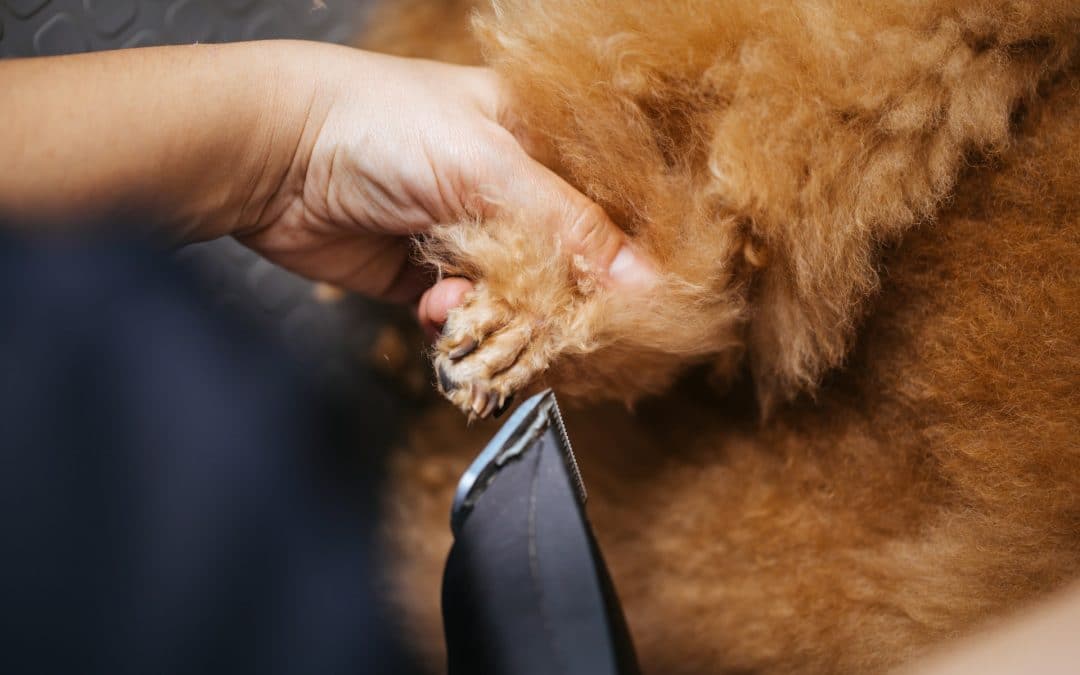Many dog owners know the struggle of trying to trim their pup’s nails. Just pulling the clippers out of the drawer can make some dogs disappear. Whether your dog trembles, squirms, growls, or bolts under the nearest couch, nail trimming can turn into a full-blown battle. It’s frustrating, especially when you know that keeping their nails short is actually better for their comfort and health.
Long nails can lead to issues like painful walking, posture problems, and even joint discomfort. But that doesn’t change how your dog feels about the clippers. If grooming feels more like a wrestling match than a care routine, you’re not alone. The good news is, there are ways to help your pup feel more at ease and make nail trims less of a drag for both of you.
Understanding The Fear
Before trying to fix the problem, it helps to understand why so many dogs resist having their nails trimmed. At its core, it’s usually about fear or discomfort. Some dogs have had a painful experience, like a quick being cut too short. If that happens once, they might remember it the next time the clippers come out. Others just don’t like having their feet touched, which can make the whole process feel like a threat.
Here are some signs your dog might be afraid of nail trims:
– Pulling or jerking their paws away
– Whining, growling, or barking when they see the clippers
– Hiding or running from the room during grooming time
– Shaking or pacing after you touch their paws
– Licking or guarding their feet even when you’re not trying to trim
Understanding where your dog’s resistance comes from can help you approach the process with more patience. For example, if your dog is fine with brushing and baths but reacts strongly to nail trimming, the problem may be tied to touch sensitivity or past experience. On the flip side, if they freak out anytime grooming tools come out, it could be more about general distress around grooming routines.
It’s also worth noting that dogs pick up on your energy. If you’re tense, rushed, or frustrated during grooming time, your dog will feel it and match that mood. Keeping your tone calm and using a gentle touch can make a big difference. Even just sitting with your dog and calmly holding their paw without trying to do anything can start to rebuild a sense of safety around the process.
Gradual Desensitization
Once you’ve got a handle on why your dog dislikes nail trims, you can start working on shaping how they respond. One helpful method is gradual desensitization. This means you introduce each step of the nail-trimming process slowly and without pressure. Over time, your dog can learn that clippers or grinders aren’t scary things.
Here’s a simple step-by-step method:
1. Start by simply touching your dog’s paws when you’re both relaxed. Do this during cuddle time or while watching TV. Don’t hold tight—just gentle touches, one paw at a time.
2. Once your dog is okay with paw touches, begin holding each paw for a few seconds. If they pull away, don’t force it. Let them take a break. Try again later.
3. Bring out the nail trimmers, but don’t use them yet. Let your dog sniff and see them. Keep your energy low and positive.
4. Touch the trimmers to your dog’s paw without trimming. Reward them with a treat and lots of praise.
5. Once they’re fine with that step, clip just the very tip of one nail. Follow up with rewards, then stop the session there.
6. Over time, you can slowly increase how many nails you trim in one sitting.
This process takes consistency and patience. Rushing the steps can set you back, so make sure your dog feels comfortable before moving to the next stage. It might feel slow, but building trust around nail trims pays off in the long run.
Tools And Techniques
The right tools can make a big difference when it comes to nail trimming. If your dog gets jumpy at the sound of clippers, switching to something quieter like a nail grinder might help. Others prefer classic clippers with a guard for added safety. The important thing is to pick a tool that fits your comfort level and matches your dog’s needs.
Every dog is different, but here are a few tips that work for most:
– Trim small amounts at a time instead of tackling the whole nail in one cut
– Trim after playtime, when your dog is more relaxed or tired
– Keep plenty of treats nearby to reward calm behavior during and after
– Pick a time when you’re not in a rush, so your energy stays calm
– Set up a consistent routine, like doing nail trims on the same day or after a walk
Holding the paw gently but with control also matters. Too loose and you lose your grip when they wiggle. Too tight and you add stress. A soft grip around the ankle gives you better control without making your dog uncomfortable.
If you’re unsure how far to trim, stay on the safe side and take very small pieces. You can always trim more, but you can’t undo a cut that hits the quick. When in doubt, a professional can walk you through it or take over altogether.
Professional Help
Sometimes the stress of nail trimming at home just isn’t worth it for you or your dog. If your dog has a strong reaction, clippers make him panic, or you just don’t feel confident handling things, a professional groomer can be a good solution. They have the training and tools to trim nails quickly and safely, and they work with dogs of all temperaments.
In these settings, groomers know how to keep a session short and low-stress. They use gentle techniques and have experience spotting early signs of discomfort. Many dogs behave better for a neutral person in a new environment than they do for their owner at home. It’s not personal. It’s just a change of context.
A grooming appointment may include more than a nail trim too. Regular visits can help your dog become more relaxed with handling overall. That means less resistance during nail sessions and other types of care over time.
If you’re in Nashville and struggling with this part of grooming, you’re not alone. It makes sense to reach out to people trained to handle it. Trust can be built, but there’s no harm in leaning on someone with the right experience to help you and your dog get there with less stress.
Building a Comfort Zone for Nail Care
Helping your dog get used to nail trims isn’t about rushing or forcing. It’s about breaking things down into small, manageable steps and building trust along the way. Some dogs need extra time, and that’s completely normal. With the right tools, a calm setting, and the use of rewards, grooming doesn’t have to be a struggle.
Whether you’re working with your dog at home or using a trusted groomer, consistency makes progress more likely. Taking your time, watching your dog’s signals, and giving treats and praise when they keep calm can set the tone for each session. Keep things short and positive so you both walk away with less stress.
It helps to remember that nail trimming isn’t just about looks. It’s part of basic comfort and care. Finding a routine that works, with patience and understanding, is the best gift you can give to your dog. That way, what once felt like a chore can start to feel like just another part of their normal care routine.
If you’re looking for expert help to make nail trims easier and more comfortable for your pup, explore our dog grooming services. The Dog Spot offers caring support in Nashville to help your dog feel relaxed and well cared for during each visit.

